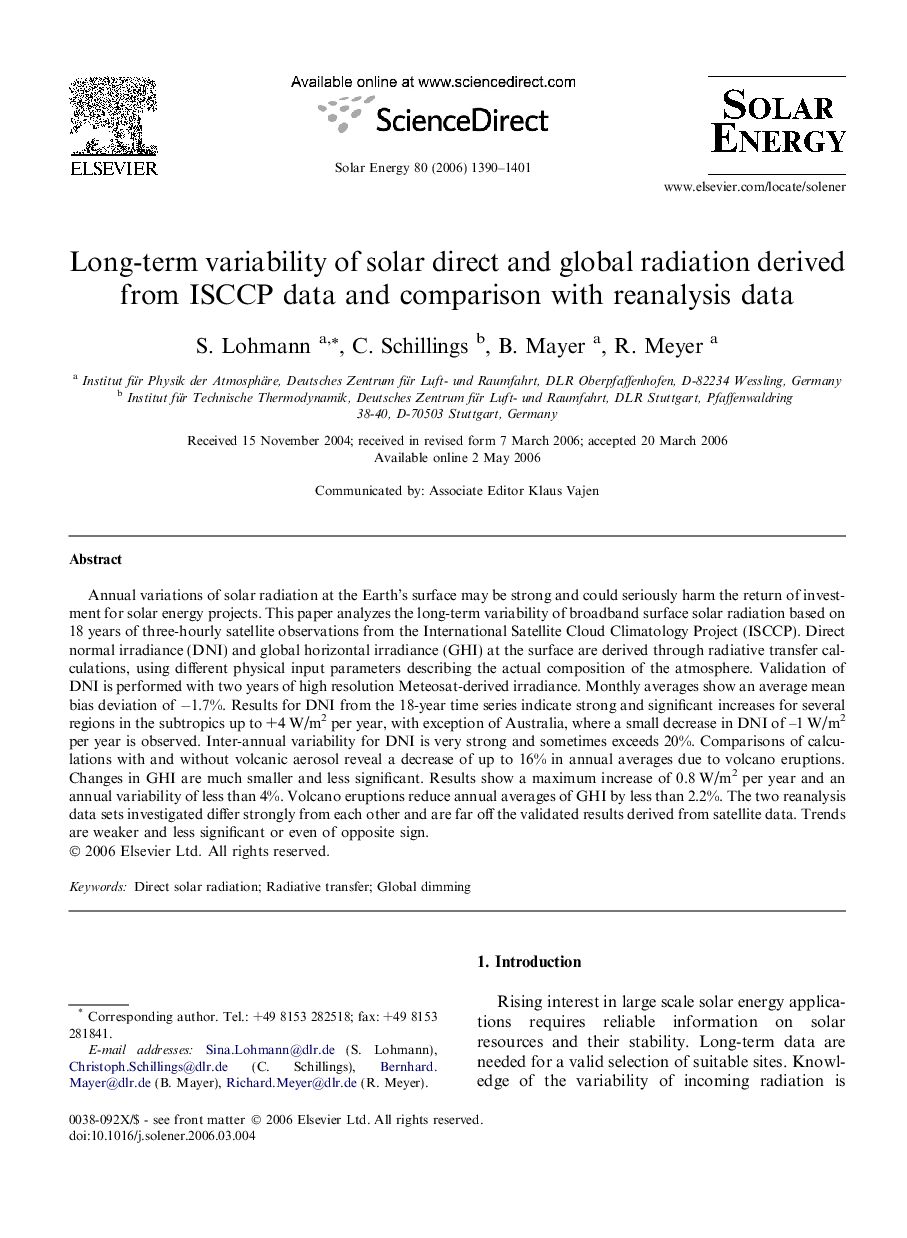| Article ID | Journal | Published Year | Pages | File Type |
|---|---|---|---|---|
| 1551854 | Solar Energy | 2006 | 12 Pages |
Annual variations of solar radiation at the Earth’s surface may be strong and could seriously harm the return of investment for solar energy projects. This paper analyzes the long-term variability of broadband surface solar radiation based on 18 years of three-hourly satellite observations from the International Satellite Cloud Climatology Project (ISCCP). Direct normal irradiance (DNI) and global horizontal irradiance (GHI) at the surface are derived through radiative transfer calculations, using different physical input parameters describing the actual composition of the atmosphere. Validation of DNI is performed with two years of high resolution Meteosat-derived irradiance. Monthly averages show an average mean bias deviation of −1.7%. Results for DNI from the 18-year time series indicate strong and significant increases for several regions in the subtropics up to +4 W/m2 per year, with exception of Australia, where a small decrease in DNI of –1 W/m2 per year is observed. Inter-annual variability for DNI is very strong and sometimes exceeds 20%. Comparisons of calculations with and without volcanic aerosol reveal a decrease of up to 16% in annual averages due to volcano eruptions. Changes in GHI are much smaller and less significant. Results show a maximum increase of 0.8 W/m2 per year and an annual variability of less than 4%. Volcano eruptions reduce annual averages of GHI by less than 2.2%. The two reanalysis data sets investigated differ strongly from each other and are far off the validated results derived from satellite data. Trends are weaker and less significant or even of opposite sign.
